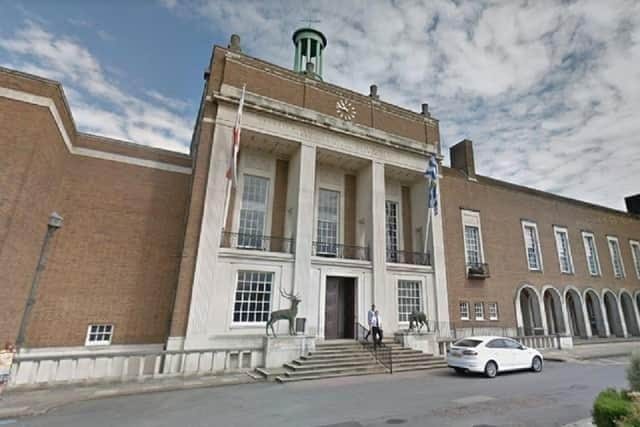Councillors highlight impact of utility companies on Dacorum highways
and live on Freeview channel 276
The impact that utility companies have on roads and footpaths across Hertfordshire has been highlighted by county councillors.
At a meeting on Tuesday (May 9) councillors were told that utility companies have a legal right to place their ‘apparatus’ – whether drains, pipes or cables – within the highway.
Advertisement
Advertisement
And where their work is deemed to be needed in an emergency, councillors were told, the companies don’t even have to tell the county council until after the work has begun.


At the meeting, members of the highways and transport cabinet panel raised concerns about sudden road closures and the way that surfaces were left afterwards.
And there were also particular concerns about the positioning of some telecommunication cabinets.
During the meeting Conservative Cllr Jeff Jones (Buntingford) highlighted a public footpath that had been dug up for utilities just months after it had been improved by the county council.
Advertisement
Advertisement
And he said it had spoiled the effect and appearance of the area, where the money had been invested.
Meanwhile Baldock and Letchworth East councillor Michael Muir (Conservative) highlighted areas of Baldock where distinctive yellow stones and resin had been removed by utility companies – and the hole filled withTarmac.
Vice chairman of the panel Conservative Cllr Graham McAndrew (Bishops Stortford South) said the installation of new utility services was an ‘unintended consequence’ of development across the county – with some areas ‘suffering’ more than others, as a result.
And he was warned that – with development set to continue – it could increase over time.
Advertisement
Advertisement
Meanwhile Liberal Democrat Cllr Stephen Giles-Medhurst pointed to the “chaos” caused and the work it created for the authority.
Cllr Giles-Medhurst also put the spotlight on new telecommunications cabinets that were restricting footway and cycleway widths.
And he said he was particularly concerned about installations in conservation areas.
At the meeting councillors were told utility companies have powers to place their ‘apparatus’ within the public highway.
Advertisement
Advertisement
A report by council offices noted that this could have an ‘adverse’ impact on road users by reducing the width of a footpath or cycleway.
And it said that ideally cabinets and poles would be placed at the back of a footway – but that this was not always possible.
It reported that depending in the size of the cabinet, utility companies may not require planning permission.
And where the positioning complies with a ‘code of practice’, it said that the county council – in its role as highways authority – did not need to be consulted.
Advertisement
Advertisement
Before carrying out works on the highway a utility company does need to seek a permit from the highway authority – but not if the works are deemed an ’emergency’.
Where councillors raise concerns about the location of cabinets, the county council’s highways officers will challenge the utility company, the meeting was told.
But – it was reported – the county council has few powers to insist that it is moved.
At the meeting the county council’s head of highways contracts and network management Steve Johnson said that as part of recent changes the ‘fixed penalty notice’ that could be levied by councils had been reduced.
And he accepted that this had ‘potentially weakened our hand slightly’.